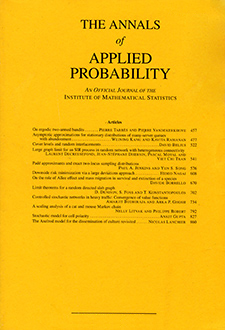Abstract
For various global characteristics of large size combinatorial structures, such as graphs, trees, one can usually estimate the mean and the variance, and also obtain a recurrence for the generating function, with the structure size n serving as the recursive parameter. As a heuristic principle based on our experience, we claim that such a characteristic is asymptotically normal if the mean and the variance are "nearly linear" in n. The technical reason is that in such a case the moment generating function (the characteristic function) of the normal distribution with the same two moments "almost" satisfies the recurrence. Of course, an actual proof may well depend on a magnitude of the relative error, and the latter is basically determined by degree of nonlinearity of the mean and the variance. We provide some new illustrations of this paradigm. The uniformly random tree on n-labelled vertices is studied. Using and strengthening the earlier results of Meir and Moon, we show that the independence number is asymptoticaly normal, with mean
Citation
Boris Pittel. "Normal convergence problem? Two moments and a recurrence may be the clues." Ann. Appl. Probab. 9 (4) 1260 - 1302, November 1999. https://doi.org/10.1214/aoap/1029962872
Information





